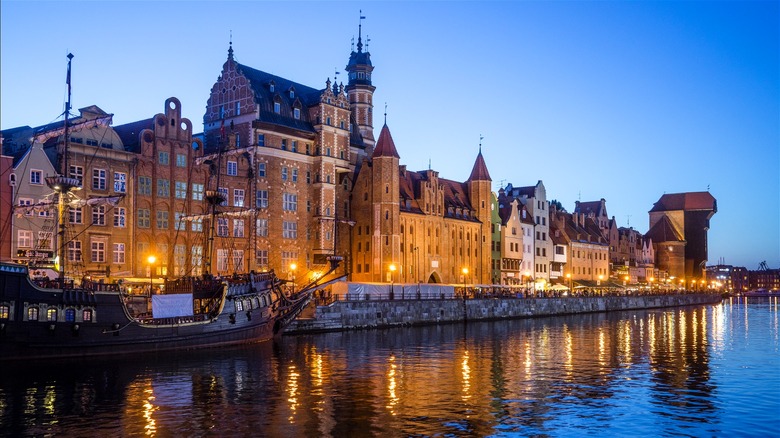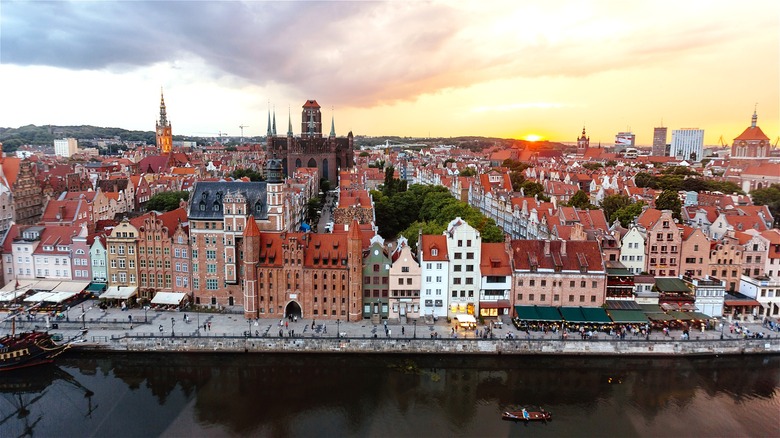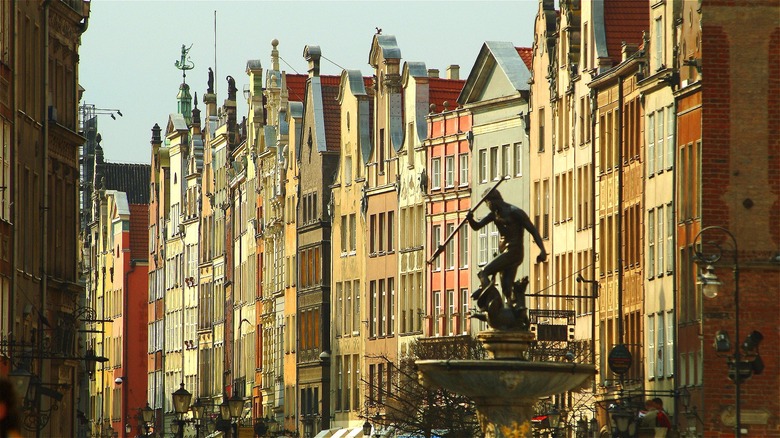This Picturesque Canal City In Poland Is Like Amsterdam's Laidback Sister With Fewer Crowds
With some of the world's most stunning canals, gabled architecture, raucous nightlife, and dynamic culture and cuisine, Amsterdam will likely never lose its appeal. However, some cities can get too popular for their own good. In 2023, the Dutch capital welcomed over 10 million international visitors — more than twice that of Venice, the notoriously busy canal city on Italy's north coast. These numbers are great for the Dutch economy, but some may curse the tourist traps, the rowdy bachelor parties, and the erosion of peace, quiet, and local culture.
Instead, take a short flight east to Gdansk, a historic port city on Poland's Baltic coast. The city spoils visitors not just with its splendid architecture in the Old Town but also with cost of living rates some 40% lower than Amsterdam. There's plenty of substance to Gdansk, too. It may be only the sixth largest city in the country, but it has had an outsized influence on the nation's history.
Gdansk dates back over 1,000 turbulent years under the rule of the Poles, the Germans, and itself as a free city during the Napoleonic wars. Today, it is perhaps best known as the origin of Solidarity, the pro-democracy workers' movement that helped end communist rule in Poland and the Eastern Bloc countries. In the decades since the Berlin Wall fell, Gdansk has become a face of Poland's post-Soviet success. Among the city's terracotta-topped buildings is a center of history, arts, and cuisine that is beautiful, affordable, and free of overbearing tourist crowds.
Low prices and thin crowds in Poland's plucky city of culture
Gdansk is among the most budget friendly cities in central Europe. A return flight from London to Gdansk is generally cheaper than the equivalent flight to Amsterdam, despite the Dutch capital being almost 600 miles nearer. The prices only get better when you arrive. According to an analysis by Numbeo, pint of beer will cost around 15 zlotys — the local currency. That's about $3.80, and almost half the average $6.60 spent in Amsterdam.
Food is also considerably cheaper in Gdansk. A three-course meal for two at a mid-range restaurant will come in at around $46, over half the price of the $100 bill you'll get in Amsterdam. The savings continue across every metric, amenity, and indulgence, producing a daily discrepancy of over $130 between Gdansk visitors, who'll pay a daily average of $57, and those in Amsterdam, where the daily tourist expenditure hits $195.
The reason for all of this is demand. Far fewer people visit Gdansk. It's doubtful how many tourists could even point to it on a map. And that's great, because it will spare the city of the overtourism and disappointing tourist traps that affect Amsterdam, Barcelona, Rome and a dozen other European cities. Getting off-the-beaten-path means you can enjoy fewer crowds as you explore this underrated city.
A hub of central European history
Rival powers have claimed Gdansk for centuries, namely the Polish and the Germans, who named it Danzig. In 1938, Adolf Hitler demanded that Poland cede Gdansk to his growing reich; their refusal helped motivate the dictator's invasion of the country in September 1939, triggering the Second World War. Much of Gdansk was destroyed during five years of total war, but unlike the modern rebuilding projects in Warsaw, Gdansk was restored to its former glory of the 16th and 17th centuries. Thanks to those painstaking efforts, visitors can enjoy row after row of colorful gabled buildings in the city's Old Town, which houses Neptune's Fountain, Długi Targ market, and St. Mary's Church, one of the largest brick churches in the world.
Even larger is Malbork Castle, a 13th-century fortress on Gdansk's outskirts. At over 35 acres or 1.5 million square feet, it is by far the largest castle in the world. Like the rest of the city, Malbork Castle was restored following the Second World War, which is commemorated in Gdansk's Museum of the Second World War — Poland's largest.


